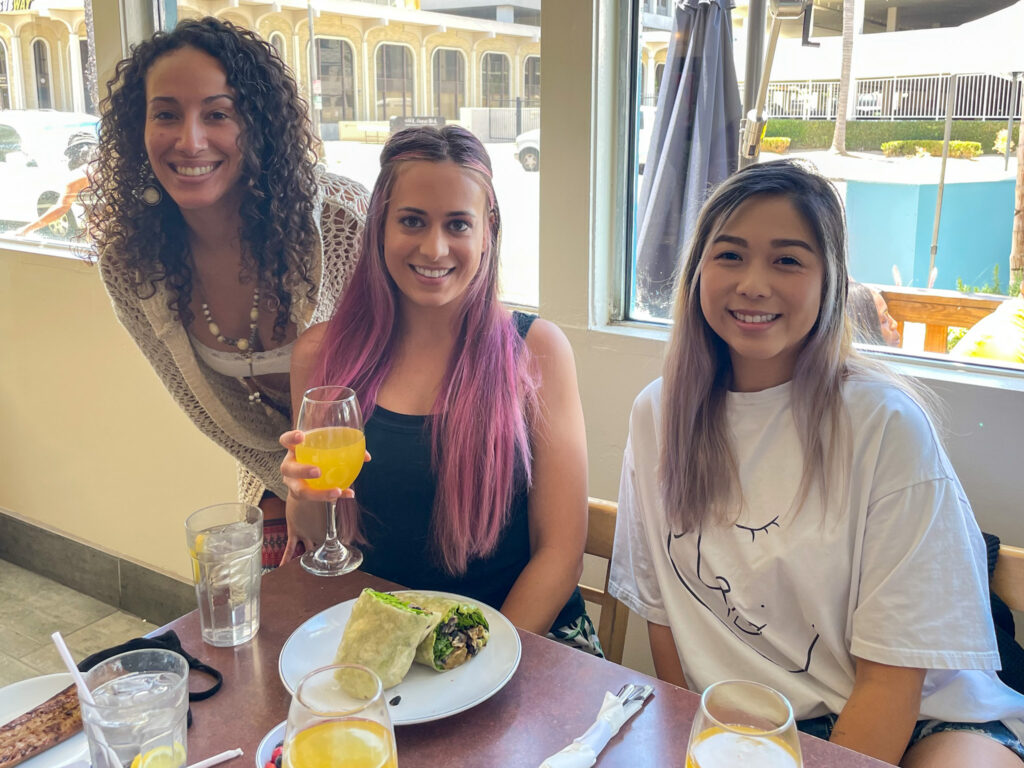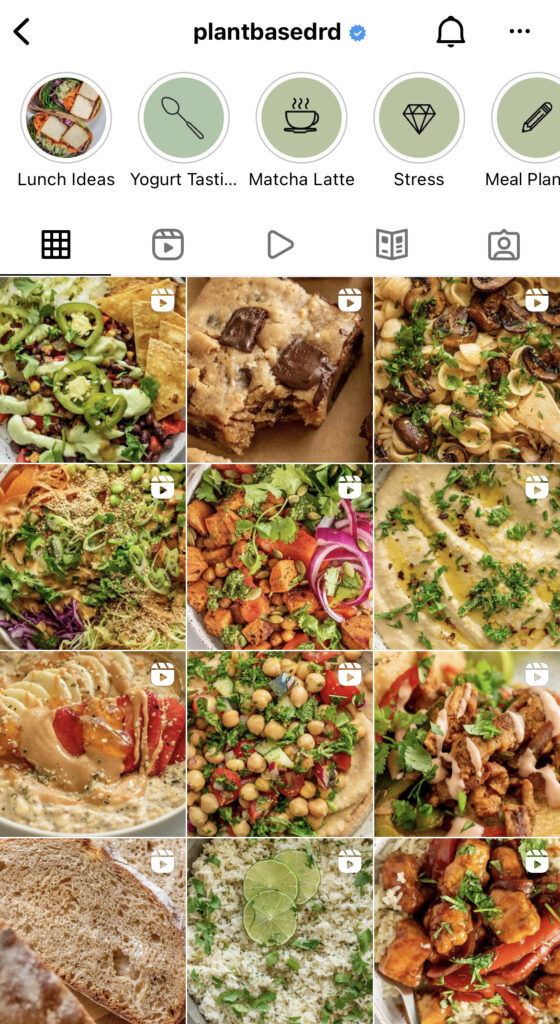Hey There!
I'm Reina
I am a full-time traveling registered nurse, fitness enthusiast, and nutrition expert. Every morning I wake up intending to bring awareness of the importance of health and spiritual wellness, especially to the traveling community. At Messy Bun Traveler, we promote travel that allows the traveler to either kick-start, maintain, or enhance a healthy lifestyle. So whether you're someone who travels for business, travels for pleasure, or new to travel and looking for health advice while on the road, this blog is for you!
inspiration
Categories:
health
destinations
fitness
resources
wellness
Privacy & Disclosure
The Messy Bun Traveler is designed to bring you fun stories, destination guides, and healthy travel advice. To help cover the cost of running this site, all posts are sprinkled with hand-selected affiliate links. When you click on one of these links and make a purchase, I will earn a small commission at no additional cost to you. I only accept affiliate links and paid advertisements from brands I believe in, trust and use personally. Thank you for your continued support!
How to Eat More Plants (And No, You Don’t Have to Go Vegan)
May 14, 2022

Are you interested in learning how to improve your diet and overall health? The answer is simple: eat more plants!
There is a lot of conflicting information on the internet, and even in the scientific community, regarding nutrition. What to eat, what not to eat, how much is too much, what we’re not getting enough of, etc.
But one thing scientists and researchers can agree on is that eating more plants is beneficial for your overall health and wellbeing.

I discovered the benefits of a whole-food, plant-based diet at the beginning of 2020. I knew I needed to make some changes to my diet.
I decided to embark on a 6-week journey that eliminated all meat, dairy products, and processed foods. Instead, I focused on meals with whole grains, beans, lentils, fresh fruits, vegetables, nuts, and seeds.
After six weeks, the results were astronomical. Not only did I feel better physically and mentally, but I looked better too. My acne cleared up, my body toned up, my mood improved, I slept better, and I had more energy during the day.
As a registered nurse, I have an immense interest in health and wellbeing. I wanted to understand how eating more plants improved people’s health. So, I enrolled in a six-week nutrition course with eCornell (Cornell University’s online learning platform) & an online biochemistry class at Berkley University.
During this time, I learned the science and research behind a plant-based diet and its role in preventing chronic diseases like cancer, heart disease, diabetes, Alzheimer’s, and certain autoimmune disorders.

While this answer to health sounds simple in theory, the implementation of just “eat more plants” may be harder to execute, especially if you have no idea where to begin.
I want to preface by saying no, you don’t have to go entirely vegan to incorporate more plants in your diet. There are no rigid rules or set amounts of what you should or shouldn’t eat. Rather, eating more plants is a lifestyle change driven by the desire to eat and live more sustainably.
Here is a list of 12 simple ways to eat more plants starting today!
Summary
Understand what works for you

Many people will say to start small and move slow. While this approach works for many people, for some, not so much.
I know for me to truly make a habitual change, I need to go all-in for at least six weeks. After that, the habit has already been ingrained into my daily routine and doesn’t feel so taxing.
You need to figure out which approach works best for you, your goals, and what will be SUSTAINABLE: the start small, move slow method or the go “cold turkey” method.
Follow the 80/20 principle
Changing up your diet is not an easy feat. What we eat daily is about more than just the food: it’s fabricated in our social circles, cultures, work environment, and travel plans.
That’s why it’s best to follow the 80/20 principle. This means that 80% of the time, you’re following a plant-based diet, and 20%, you’re giving yourself the freedom for some leeway.
Many people associate “plant-based” eating with being vegetarian or vegan. But you don’t need to be “vegan” to eat a more plant-based diet. Sticking to the 80/20 rule will get you on your way to eating more plants and less meat without it becoming daunting.
See also:
Make smoothies loaded with fruits & vegetables

Daily smoothies are an excellent way to sneak your daily allotment of fruits and vegetables. They’re quick, delicious, and filling.
Throw vegetables like spinach, kale, cucumber, or even cauliflower in the mix! For fruit, you can’t go wrong with strawberries, bananas, blueberries, or mangos! Don’t be afraid to try new things!
See also:
Plan out your meals

What I found to be the true secret to my success was planning my meals in advance. At the start of each week, I wrote out what I planned on eating and found the recipes I wanted to use.
Say I was feeling overnight oats for breakfast. I would then search through Pinterest or Instagram for an overnight oats recipe that looked appetizing, quick, and easy.
I do this with all my meals for the week, so I never had to make any decisions while hungry and vulnerable to making bad eating decisions.
Switch to non-dairy milk

There are so many plant-based dairy alternatives that there really isn’t a need for animal milk anymore. Sample some plant-based kinds of milk and find the one you like best. My personal favorite is oat milk! Its flavor closely resembles regular dairy, but without all the saturated fat & hormones!
Buy your fruit & vegetables pre-chopped

One thing that always deters people from eating more plants is the prep involved. I’ve been able to cut my cooking and meal-prepping time in half by buying my fruits and vegetables already pre-chopped or canned.
For carrots, I buy them pre-shredded. For broccoli, kale, cauliflower, lettuce, etc. I purchase them all pre-chopped. For beans and lentils, it’s best to buy them canned instead of buying them dry (dry beans can take up an extra day of soaking).
A grocery store I recommend that carries a lot of pre-prepped fruits and vegetables is Sprouts.
Get creative with your salads

Salads can be a great way to easily eat more plants! Add more than just your standard lettuce, cucumbers, and tomatoes. Get colorful with it! Try radishes, edamame, cooked tofu, quinoa, beans, onions, strawberries, or even mangos!
Meal prep

Not only do I plan out my meals, but I prep my meals in advance too. I will frequently make my lunches and dinners in bulk and eat them throughout the week. This saves me ample time and money!
See also:
Try plant-based versions of your favorite dishes

Make sure you’re cooking dishes that you’ll enjoy. Eating more plants shouldn’t feel like a chore! Try making plant-based versions of your favorite dishes like tacos, pasta, or even pizza!
Keep your recipes simple
Sometimes all the recipes with extensive lists of ingredients are overwhelming. Stick to simple, quick, and easy recipes that won’t keep you stuck in the kitchen for hours.
Follow the “Daily Dozen”


The Daily Dozen is a list of 12 items to consume daily comprised of the 10 plant food groups, healthy beverages, and moderate exercise. The list was compiled by Dr. Greger, a general practitioner specializing in clinical nutrition and public health.
If you’re stuck on what to eat or prep for the week, take a look at the Daily Dozen list and see what you need to add to your diet for a more nutritionally balanced day. I wrote the list on our blackboard and hung it up in our kitchen for easy access.
Balance your meals

Make sure you’re adding not only variety to your meals but also sufficient amounts of each macronutrient.
Balance your plate with healthy carbohydrates (whole grains, fruits, & vegetables), healthy fats (olive oil, avocado, nuts, & seeds), and healthy proteins (beans, lentils, tofu, & quinoa).
See also:
Bonus: influencers & websites I follow for plant-based recipes
If you’re looking for Instagram inspiration or food blogs with quick & easy recipes to incorporate more plants into your diet, here are three accounts I follow! I can personally attest that their recipes are delicious, fast, and healthy, as I make their recipes at home every week!

Reina Conboy
I am a full-time traveling registered nurse, fitness enthusiast, and plant-based nutrition expert. Every morning I wake up intending to bring awareness of the importance of health and spiritual wellness, especially to the traveling community. This blog is designed to bring you travel and health advice while sprinkling in fun life stories along the way.
Join my newsletter
* We will never share your details with any third party


